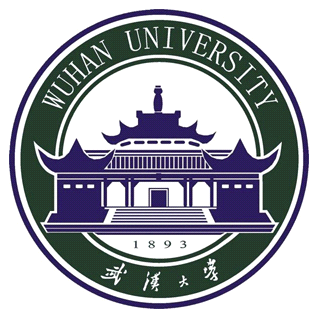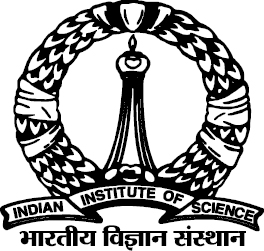Jefferey M. Sellers, Department of Political Science
Urban Environmental Governance in China and India
One of the major social scientific challenges of the twenty-first century lies in understanding and managing the rapid urbanization
that is now under way in the developing world. More of this urbanization is taking place in China and India than anywhere else.
Between 1970 and 2010 these two countries alone added one billion new urban residents, or nearly half of global urban population
growth. Over 2010-2030, as cities in both countries continue to expand, the United Nations projects a further increase of 500 million
people—a figure equivalent to the current population of the European Union.This project, undertaken in collaboration with the Wuhan University School of Urban Design in Wuhan, China and the Indian Institute
of Sciences in Bangalore, India, inutilizes remote sensing data along with other sources to examine the dynamics of urbanization, their
environmental consequences, and the institutional and other influences on pathways of urban change. A first phase over 2008-2011
compared dynamics of peri-urban change from the 1970s to the 2000s in twenty of the largest urbanizing regions of China and India.
A recently funded second phase will compare wider regional dynamics of urban expansion and their consequences in both countries.
The project is funded by the Asia-Pacific Network for Global Change Research and the U.S. National Science Foundation.Published papers with project co-investigators:
"Understanding the dynamics of urban form: A comparison of Chinese and Indian cases", Landscape and Urban Planning (revise and resubmit) (co-authored with Huang, J., Ramachandra, T. V., Kumar, U.).
”Modelling Urban Dynamics along Two Major Industrial Corridors in India”, Spatial Information Research (2018) (with Ramachandra, T.V., Bharath, H.A. and Vinay, S.).
"An Exploration of Multi-Scale Network Structure of the Yangtze River Middle Reaches Urban Agglomerations Based on an Interlocking Model" Urban and Rural Planning 5: 65-75 (2017) (with Huang, J., Chen, S. and Xing, X.).
"Measuring the Difference Between Coastal and Inland Urban Agglomerations: A Comparison between Wuhan Metropolitan Area and Yangtze River Delta Urban Agglomeration Based on Urban Flows”, Modern Urban Research 7: 114-123 (2017) (with Huang, J., Wang, C., and Zhang, L.).
"A Global Comparative Analysis of Urban Form: Applying Remote Sensing and GIS" Landscape and Urban Planning 82 (4):
184-197 (2007)(with Jingan Huang and Xi Xi Lu).
Other Publications and Papers:
Liu, Y., Yue, W., Fan, P., Zhang, Z., & Huang, J. (2017). Assessing the urban environmental quality of mountainous cities: A case study in Chongqing, China. Ecological Indicators, 81, 132–145. https://doi.org/10.1016/j.ecolind.2017.05.048
Sellers, J., & Wang, H. (2017). The Emerging Face of Suburban India: The Geography of Housing Markets (Working Paper). Los Angeles, California: Lusk Center for Real Estate Research, University of Southern California.
Bharath, H. A., Vinay, S., Chandan, M. C., Gouri, B. A., & Ramachandra, T. V. (2018). Green to gray: Silicon Valley of India. Journal of Environmental Management, 206, 1287–1295. https://doi.org/10.1016/j.jenvman.2017.06.072
Ramachandra, T. V., Sellers, J., Bharath, H. A., Vinay, S., & Brigit, M. B. (2017). Spatial pattern of land use dynamics in Mumbai Pune Express corridor (ENVIS Technical Report No. 137). Bangalore, India: Indian Institute of Sciences.
Brigit, M. B., Bharath, H. A., Nityanandam, Y., & Ramachandra, T. V. (2017). Analysis of landscape dynamics in the Pune-Mumbai industrial corridor. In Proceedings of International Conference on Urban Geoinformatics, February 2017. New Delhi, India: TERI University.
Yue, W., Zhang, L., & Liu, Y. (2016). Measuring sprawl in large Chinese cities along the Yangtze River via combined single and multidimensional metrics. Habitat International, 57, 43–52. https://doi.org/10.1016/j.habitatint.2016.06.009
Ramachandra, T. V., Sellers, J., Bharath, H. A., Vinay, S., & Brigit, M. B. (2016). Urban dynamics in the proposed Mangalore-Bangalore-Chennai industrial corridor (ENVIS Technical Report No. 115). Bangalore, India: Indian Institute of Sciences.
Ramachandra, T. V., Sellers, J., Bharath, H. A., Vinay, S., & Brigit, M. B. (2018). Geo-visualisation of landscape dynamics in the proposed mega industrial corridor. Abstract submitted to the BDCC 2018 2nd International Workshop on Biodiversity and Climate Change, IIT Kharagpur, West Bengal, India.
Ramachandra, T. V., Sellers, J., Bharath, H. A., & Bharath, S. (2018). Micro level analyses of environmentally disastrous urbanisation in Bangalore. Presented at the BDCC 2018 2nd International Workshop on Biodiversity and Climate Change, IIT Kharagpur, West Bengal, India.
Ramachandra, T. V., Aithal, B. H., & Kumar, U. (2009). Geoinformatics for Urbanisation and Urban Sprawl pattern analysis, Chapter 19, In: Geoinformatics for Natural Resource Management (Eds. Joshi et al.). Nova Science Publishers, NY. Pp 235-272.
Han, S.S. (2010). “Urban Expansion in Contemporary China: What Can We Learn From a Small Town?” Land Use Policy 27(3): 780-787.
Ramachandra, T. V., Aithal, B. H., & Sanna, D. D. (2012). Insights to urban dynamics through landscape spatial pattern analysis. International Journal of Applied Earth Observation and Geoinformation, 18(0), 329-343. doi: 10.1016/j.jag.2012.03.005
Bharath H. Aithal, Bharath Settur, Durgappa Sanna D., and Ramachandra. T.V. (2012). Empirical patterns of the influence of Spatial Resolution of Remote Sensing Data on Landscape Metrics., International Journal of Engineering Research and Applications (IJERA), Vol. 2, Issue 3, May-Jun 2012, pp.767-775.
homepage | biographical
information | publications
| data | current
projects
courses | local
linkages | urban
environmental governance | international
metropolitan observatory | USC
political science
e-mail me




